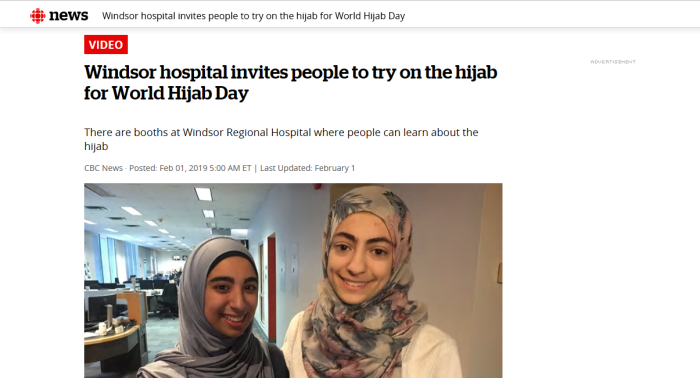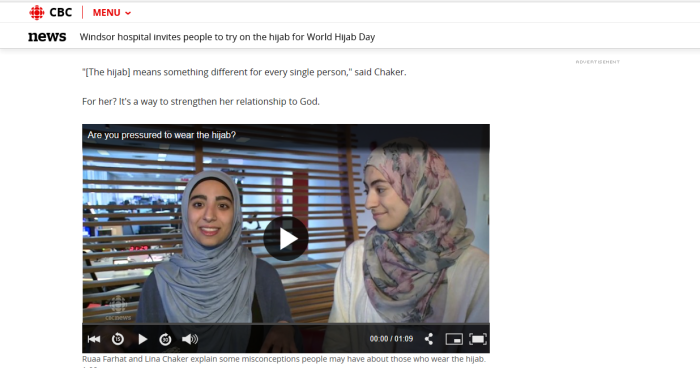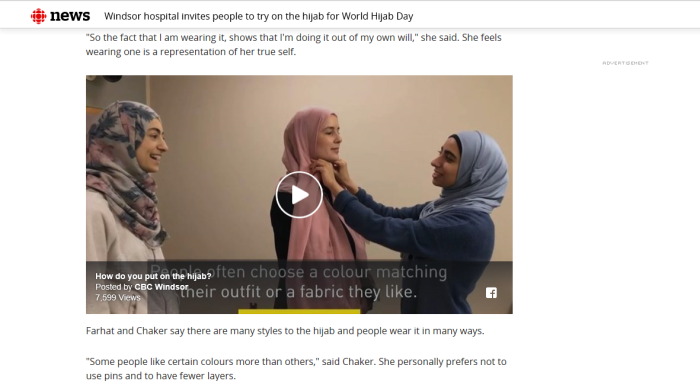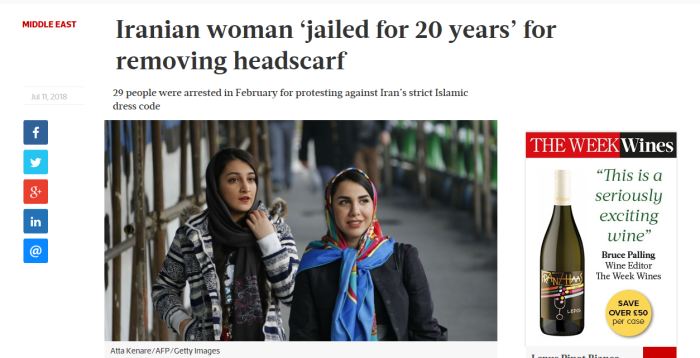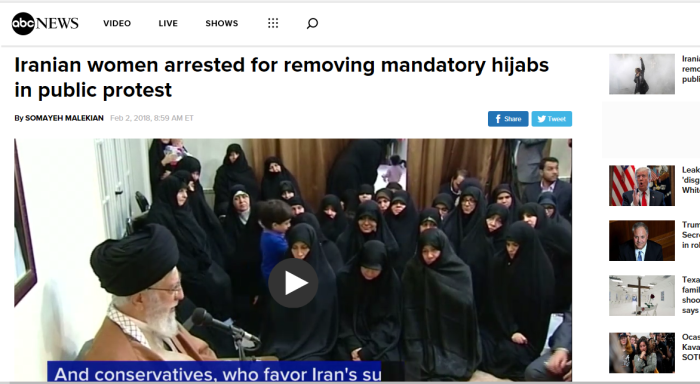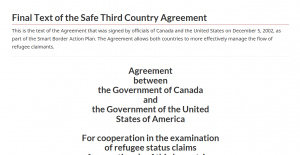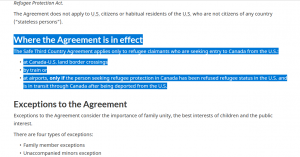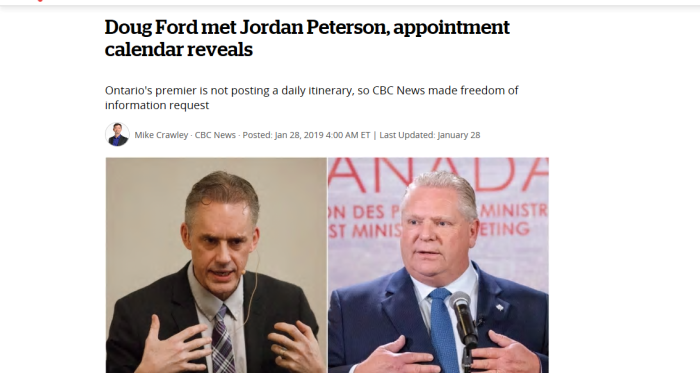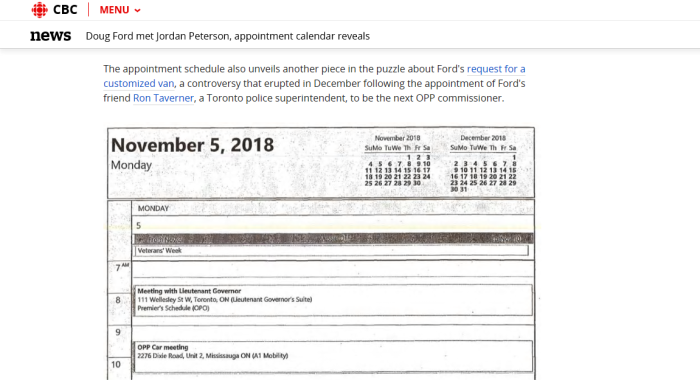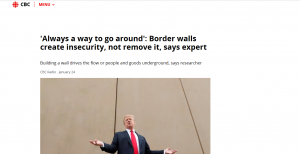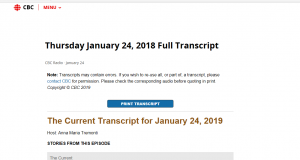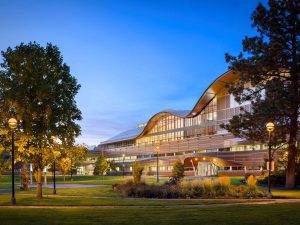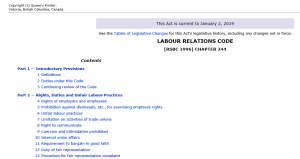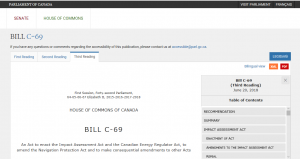
(Canada’s Bill C-69)
(Apparently, science is “Colonial”, in S. Africa anyway)
(Science is so racist, apparently)
(One of the few times “White” science is good)
CLICK HERE, for the bill in its latest form, which is currently undergoing 3rd reading in House of Commons.
CLICK HERE, for 2012 version of Environmental Assessment Act.
CLICK HERE, for the 1985 Navigation Protection Act.
CLICK HERE, for Energy Regulator Handbook.
SUMMARY HERE
If nothing else, take these points away:
-Regulators have wide discretion to shut everything down
-Regulators have wide discretion to hand out fines and penalties
-Gender based analysis is lens which projects to be viewed though
-Indigenous rights ensure that any project can be stopped almost at will
-Advisory Board must include (a) FN; (b) Inuit; (c) Metis
-“White Science” and “Indigenous Knowledge” to both be considered
-“Indigenous Knowledge” is confidential, unless common knowledge
-“Indigenous Knowledge” given to regulator is private unless public interest to disclose.
-“Indigenous Knowledge” is some secret sauce that can shut down projects, but must be kept confidential to protect …. something.
-Special Tribunal can be set up for compensation in pipeline spills
THIS CAN BE CHALLENGED IN FEDERAL COURT
Federal Court
Appeal to Federal Court
138 The Minister or any person or entity to whom an order, as confirmed or varied by a review officer, is directed may, by filing a written notice of appeal within 30 days after the day on which the written reasons are provided by the review officer under section 135, appeal to the Federal Court from the review officer’s decision.
Order not suspended
139 The filing of a notice of appeal under section 138 does not suspend the operation of an order, as confirmed or varied by a review officer.
Injunctions
Court’s power
140 (1) If, on the Minister’s application, it appears to a court of competent jurisdiction that a person or entity has done, is about to do or is likely to do any act constituting or directed toward the commission of an offence under this Act, the court may issue an injunction ordering the person or entity who is named in the application to
(a) refrain from doing an act that, in the court’s opinion, may constitute or be directed toward the commission of the offence; or
(b) do an act that, in the court’s opinion, may prevent the commission of the offence.Notice
(2) No injunction is to be issued under subsection (1) unless 48 hours’ notice is served on the party or parties who are named in the application or unless the urgency of the situation is such that service of notice would not be in the public interest.
*****************************************
Judicial Review
Grounds
170 Subject to section 168, every decision of a Tribunal is final and conclusive and is not to be questioned or reviewed in any court except in accordance with the Federal Courts Act on the grounds referred to in paragraph 18.1(4)(a), (b) or (e) of that Act.
Good to know…. this may come in handy later.
Also, there is a section on discrimination. Of course, with this government, no legislation would be complete without it. However, the terms here seem to suggest more of a “price fixing” nature than actual discrimination. Read for yourself.
Discrimination
No unjust discrimination
235 A company must not make any unjust discrimination in tolls, service or facilities against any person or locality.
Burden of proof
236 If it is shown that a company makes any discrimination in tolls, service or facilities against any person or locality, the burden of proving that the discrimination is not unjust lies on the company.
Prohibition
237 (1) A company or shipper, or an officer, employee or agent or mandatary of a company or shipper, is guilty of an offence punishable on summary conviction if they
(a) offer, grant, give, solicit, accept or receive a rebate, concession or discrimination that allows a person to obtain transmission of hydrocarbons or any other commodity by a company at a rate less than that named in the tariffs then in effect; or
(b) knowingly are party or privy to a false billing, false classification, false report or other device that has the effect set out in paragraph (a).Due diligence
(2) A person is not to be found guilty of an offence under paragraph (1)(a) if they establish that they exercised due diligence to prevent the commission of the offence.
Prosecution
(3) No prosecution may be instituted for an offence under this section without leave of the Commission.
Introduction To The Bill
Preamble
Whereas the Government of Canada is committed to implementing an impact assessment and regulatory system that Canadians trust and that provides safeguards to protect the environment and the health and safety of Canadians;
Whereas the Government of Canada is committed to enhancing Canada’s global competitiveness by building a system that enables decisions to be made in a predictable and timely manner, providing certainty to investors and stakeholders, driving innovation and enabling the carrying out of sound projects that create jobs for Canadians;
Whereas the Government of Canada is committed to achieving reconciliation with First Nations, the Métis and the Inuit through renewed nation-to-nation, government-to-government and Inuit-Crown relationships based on recognition of rights, respect, co-operation and partnership;
Whereas the Government of Canada is committed to using transparent processes that are built on early engagement and inclusive participation and under which the best available scientific information and data and the Indigenous knowledge of the Indigenous peoples of Canada are taken into account in decision-making;
And whereas the Government of Canada is committed to assessing how groups of women, men and gender-diverse people may experience policies, programs and projects and to taking actions that contribute to an inclusive and democratic society and allow all Canadians to participate fully in all spheres of their lives;
Now, therefore, Her Majesty, by and with the advice and consent of the Senate and House of Commons of Canada, enacts as follows:
1/ Safeguards to protect the environment, and H&S of Canadians? Okay, few could disagree with that.
2/ Promoting competitiveness sounds great, if that is what the Bill does.
3/ Committed to reconciliation? Okay, here is where we start to have issues. Will development be blocked or rerouted in the name of “reconciliation”? Or will there be extra “taxes” attached?
4/ Inclusive participation? Isn’t that redundant? And best scientific information and data “and” the Indigenous knowledge of the Indigenous peoples are taken into account?
*** So is there Indigenous knowledge and non-Indigenous science and data? See the above video on “decolonizing science”
5/ Committed to assessing how groups of women, men and gender-diverse people may experience things? Okay, back to the gender obsession. And is “gender diverse” a reference to trannies, or just mixed men/women?
6/ I thought this was a science based approach. Now it’s being infiltrated by (a) Indigenous knowledge and (b) Gender politics.
Okay, now we get to “another” preamble,
PART 1
Impact Assessment Act
Enactment of Act
Enactment
1 The Impact Assessment Act, whose Schedules 1 to 4 are set out in the schedule to this Act, is enacted as follows:
An Act respecting a federal process for impact assessments and the prevention of significant adverse environmental effects
Preamble
Whereas the Government of Canada is committed to fostering sustainability;
Whereas the Government of Canada recognizes that impact assessments provide an effective means of integrating scientific information and Indigenous knowledge into decision-making processes related to designated projects;
Whereas the Government of Canada recognizes the importance of public participation in the impact assessment process, including the planning phase, and is committed to providing Canadians with the opportunity to participate in that process and with the information they need in order to be able to participate in a meaningful way;
Whereas the Government of Canada recognizes that the public should have access to the reasons on which decisions related to impact assessments are based;
Whereas the Government of Canada is committed, in the course of exercising its powers and performing its duties and functions in relation to impact, regional and strategic assessments, to ensuring respect for the rights of the Indigenous peoples of Canada recognized and affirmed by section 35 of the Constitution Act, 1982, and to fostering reconciliation and working in partnership with them;
Whereas the Government of Canada is committed to implementing the United Nations Declaration on the Rights of Indigenous Peoples;
Whereas the Government of Canada recognizes the importance of cooperating with jurisdictions that have powers, duties and functions in relation to the assessment of the effects of designated projects in order that impact assessments may be conducted more efficiently;
Whereas the Government of Canada recognizes that a transparent, efficient and timely decision-making process contributes to a positive investment climate in Canada;
Whereas the Government of Canada recognizes that impact assessment contributes to Canada’s ability to meet its environmental obligations and its commitments in respect of climate change;
Whereas the Government of Canada recognizes the importance of encouraging innovative approaches and technologies to reduce adverse changes to the environment and to health, social or economic conditions;
And whereas the Government of Canada recognizes the importance of regional assessments in understanding the effects of existing or future physical activities and the importance of strategic assessments in assessing federal policies, plans or programs that are relevant to conducting impact assessments;
Now, therefore, Her Majesty, by and with the advice and consent of the Senate and House of Commons of Canada, enacts as follows:
1/ The Government of Canada is committed to sustainability? Okay, sounds nice, but that can get very expensive. See Agenda 21, signed in 1992 by Brian Mulroney, and Agenda 2030, signed in 2015 by Stephen Harper. Interestingly, Mulroney and Harper both “identify” as Conservatives.
2/ Integrating scientific information and Indigenous knowledge? Again, is there a separate set of scientific principles depending on skin colour or ethnicity? Science is so racist.
3/ Committed to public participation, yet this is an omnibus bill rammed though parliament
4/ Fostering reconciliation and inclusion? So will protests be shutting down any projects? Will “payments” be demanded?
5/ You support UN Declaration on Indigenous Rights? Okay, that agreement means that virtually any work can be shut down at any time, for any reason.
6/ Meet it’s international efforts regarding climate change? Silly me, thinking Paris Accord was “non-binding”
Note: There is a preamble for the Energy Regulator Act, and it’s wording is almost identical.
Rights of Indigenous peoples of Canada
3 For greater certainty, nothing in this Act is to be construed as abrogating or derogating from the protection provided for the rights of the Indigenous peoples of Canada by the recognition and affirmation of those rights in section 35 of the Constitution Act, 1982.
Again, any project can be shut down on a whim.
Purpose
Purpose of Act
6 The purpose of this Act is to regulate certain energy matters within Parliament’s jurisdiction and, in particular,
(a) to ensure that pipelines and power lines as well as facilities, equipment or systems related to offshore renewable energy projects, are constructed, operated and abandoned in a manner that is safe, secure and efficient and that protects people, property and the environment;
(b) to ensure that the exploration for and exploitation of oil and gas, as defined in section 2 of the Canada Oil and Gas Operations Act, is carried out in a manner that is safe and secure and that protects people, property and the environment;
(c) to regulate trade in energy products; and
(d) to ensure that regulatory hearings and decision-making processes related to those energy matters are fair, inclusive, transparent and efficient.
(a) No problem with this.
(b) No problem with this.
(c) Stop. Government shouldn’t be regulating trade. It just makes things more expensive.
(d) Make decisions that are inclusive? Getting back into the gender politics again?
Mandate
11 The Regulator’s mandate includes
(a) making transparent decisions, orders and recommendations with respect to pipelines, power lines, offshore renewable energy projects and abandoned pipelines;
(b) overseeing the construction, operation and abandonment of pipelines, interprovincial power lines and international power lines and overseeing work and activities authorized under Part 5 as well as abandoned facilities;
(c) making orders with respect to traffic, tolls and tariffs and overseeing matters relating to traffic, tolls and tariffs;
(d) making decisions and orders and giving directions under Part 8 with respect to oil and gas interests, production and conservation;
(e) advising and reporting on energy matters;
(f) providing alternative dispute resolution processes;
(g) exercising powers and performing duties and functions that are conferred on the Regulator under any other Act of Parliament; and
(h) exercising its powers and performing its duties and functions in a manner that respects the Government of Canada’s commitments with respect to the rights of the Indigenous peoples of Canada.
On the surface, this doesn’t look objectionable. However, it is unclear just how much authority the Energy Regulator will have to make unilateral decisions.
Board of Directors
Establishment and composition
14 (1) The Regulator is to have a board of directors consisting of at least five but not more than nine directors, including a Chairperson and a Vice-Chairperson.
Indigenous representation
(2) At least one of the directors must be an Indigenous person.
Of course, it wouldn’t be a Liberal bill without a racial or gender quota.
Matters of law and fact
(3) For the purposes of this Act, the Commission has full jurisdiction to hear and determine all matters, whether of law or of fact.
Power to act on own initiative
33 The Commission may on its own initiative inquire into, hear and determine any matter that under this Act it may inquire into, hear and determine.
Orders and prohibitions
34 The Commission may
(a) order any person to do, immediately or within or at any specified time and in any specified manner, anything that the person is or may be required to do under this Act, under a condition of a document of authorization, or under any order made or direction given by the Commission or a designated officer under this Act; and
(b) prohibit the doing or continuing of anything that is contrary to this Act, to a condition of the document of authorization or to the order or direction.
Okay, now we are getting into some actual enforcement. However it is unclear what all these added levels of bureaucracy will actually accomplish. It just seems to slow things down.
Wasn’t part of this bill to ensure speedy startup and process?
Exercise of Commission’s Powers and Performance of Its Duties and Functions by Designated Officers
Regulations
54 The Governor in Council may make regulations that specify
(a) powers, duties and functions of the Commission that are technical or administrative in nature and may be exercised or performed by designated officers;
(b) any circumstances in which those powers are to be exercised and those duties and functions are to be performed only by designated officers; and
(c) the procedures and practices that apply to the exercise of those powers and the performance of those duties and functions by designated officers.
Good in a way, delegate matters the powers at hand don’t understand to underlings who would know more.
Also a bit concerning. There is no requirement to actually have any education, experience or training in the industry. Wouldn’t this invite mistake from incompetent, politically driven leaders?
Rights and Interests of the Indigenous Peoples of Canada
Duty to consider — Commission
56 (1) When making a decision, an order or a recommendation under this Act, the Commission must consider any adverse effects that the decision, order or recommendation may have on the rights of the Indigenous peoples of Canada recognized and affirmed by section 35 of the Constitution Act, 1982.
Duty to consider — designated officers
(2) When making a decision or an order under this Act, a designated officer must consider any adverse effects that the decision or order may have on the rights of the Indigenous peoples of Canada recognized and affirmed by section 35 of the Constitution Act, 1982.
Advisory committee
57 (1) The Regulator must establish an advisory committee for the purpose of enhancing the involvement, under Part 2, of the Indigenous peoples of Canada and Indigenous organizations in respect of pipelines, power lines and offshore renewable energy projects as well as abandoned pipelines.
Membership
(2) The membership of the advisory committee must include at least
(a) one person recommended by an Indigenous organization that represents the interests of First Nations;
(b) one person recommended by an Indigenous organization that represents the interests of the Inuit; and
(c) one person recommended by an Indigenous organization that represents the interests of the Métis.Confidentiality — Indigenous knowledge
58 (1) Any Indigenous knowledge that is provided in confidence to the Regulator under this Act or any other Act of Parliament that confers powers, duties or functions on the Regulator is confidential and must not knowingly be, or be permitted to be, disclosed without written consent.
Exception
(2) Despite subsection (1), the Indigenous knowledge referred to in that subsection may be disclosed if
(a) it is publicly available;
(b) the disclosure is necessary for the purposes of procedural fairness and natural justice or for use in legal proceedings; or
(c) the disclosure is authorized in the circumstances set out in the regulations made under section 59.Consultation
(2.1) Before disclosing Indigenous knowledge under paragraph 2(b) for the purposes of procedural fairness and natural justice, the Regulator must consult the person or entity who provided the Indigenous knowledge and the person or entity to whom it is proposed to be disclosed about the scope of the proposed disclosure and potential conditions under subsection (3).
Further disclosure
(3) The Regulator may, having regard to the consultation referred to in subsection (2.1), impose conditions with respect to the disclosure of Indigenous knowledge by any person or entity to whom it is disclosed under paragraph (2)(b) for the purposes of procedural fairness and natural justice.
Duty to comply
(4) The person or entity referred to in subsection (3) must comply with any conditions imposed by the Regulator under that subsection.
Protection from civil proceeding or prosecution
(5) Despite any other Act of Parliament, no civil or criminal proceedings lie against the Regulator or the Minister — or any person acting on behalf of, or under the direction of, either of them — and no proceedings lie against the Crown or the Regulator, for the disclosure in good faith of any Indigenous knowledge under this Act or any other Act of Parliament that confers powers, duties or functions on the Regulator or for any consequences that flow from that disclosure.
Regulations
59 The Governor in Council may make regulations prescribing the circumstances in which Indigenous knowledge that is provided to the Regulator under this Act in confidence may be disclosed without written consent.
Once again, this seems designed to fail.
1/ If any indigenous person or group can shut down an entire project, or at least delay it for years, development will come to a standstill.
2/ Duty to consult: Again sounds nice, but written in such a way as to ensure nothing gets through.
3/ Committee must include:
(a) First Nations
(b) Inuit
(c) Metis
So not only is there “one” representative, but there are to be “three” each from different groups.
4/ Indigenous Knowledge provided to regulator is confidential.
What? So it cannot be challenged if we don’t know what it is.
5/ Before “disclosing Indigenous Knowledge”, the Regulator must discuss with person who provided it.
6/ No punishment for disclosing “Indigenous Knowledge” if it was done in good faith? Great, but if this knowledge is so powerful, why “wouldn’t” we want to share it
7/ So where is all this transparency, if “Indigenous Knowledge” is kept secret?
Public Engagement
Public engagement
74 The Regulator must establish processes that the Regulator considers appropriate to engage meaningfully with the public — and, in particular, the Indigenous peoples of Canada and Indigenous organizations — when public hearings are held under section 52 or subsection 241(3).
Participant funding program
75 For the purposes of this Act, the Regulator must establish a participant funding program to facilitate the participation of the public — and, in particular, the Indigenous peoples of Canada and Indigenous organizations — in public hearings under section 52 or subsection 241(3) and any steps leading to those hearings.
Public hearings are good, but the incessant pandering to Indigenous groups gets tiring.
Regulation of Construction, Operation and Abandonment
Orders
95 (1) To promote the safety and security of the operation of a regulated facility, the Commission may, by order, direct the holder to repair, reconstruct or alter part of the regulated facility and direct that, until the work is done, that part of the regulated facility not be used or be used in accordance with any conditions specified by the Commission.
Other measures
(2) The Commission may, by order, direct any of the following persons or bodies to take measures in respect of a regulated facility, an abandoned facility or any work or activity authorized under Part 5 that the Commission considers necessary for the safety and security of persons, the safety and security of the regulated facility or abandoned facility or the protection of property or the environment:
(a) an Indigenous governing body;
(b) the holder or any other person;
(c) the federal government or a federal Crown corporation;
(d) a provincial government or a provincial Crown corporation;
(e) a local authority.
This sounds nice, but in practice, anyone on the list can start making demands and delay or shut down any major project. Again, pandering to Indigenous bodies.
Offence and punishment — duty to assist and orders
112 (1) Every person who contravenes subsection 103(4) or fails to comply with an order under section 109 is guilty of an offence and is liable
(a) on conviction on indictment, to a fine of not more than $1,000,000 or to imprisonment for a term of not more than five years or to both; or
(b) on summary conviction, to a fine of not more than $100,000 or to imprisonment for a term of not more than one year or to both.
Defence — no notice
(2) A person must not be found guilty of an offence for failing to comply with an order under section 109 unless the person was given written notice of the order in accordance with paragraph 109(3)(a).
Offence and punishment — obstruction
(3) Every person who contravenes section 106 is guilty of an offence punishable on summary conviction and is liable, for a first offence, to a fine of not more than $100,000 and, for any subsequent offence, to a fine of not more than $300,000.
This is one of many references in the Bill which criminalise certain actions. If nothing else, the bill does have teeth in it.
Pipeline Claims Tribunal
Establishment
Establishment of Tribunal
143 (1) The Governor in Council may, by order, after a designation is made under subsection 141(1), establish a pipeline claims tribunal whose purpose is to examine and adjudicate, as expeditiously as the circumstances and considerations of fairness permit, the claims for compensation made under this Act in relation to the release that occurred from the designated company’s pipeline and specify the location of its head office.
Reasons
(2) However, the Governor in Council may establish a pipeline claims tribunal only if, having regard to the extent of the compensable damage caused by the release, the estimated cost of paying compensation in respect of that damage and the advantages of having claims dealt with by an administrative tribunal, the Governor in Council considers it in the public interest to do so.
Claims treated equitably
(3) A Tribunal must exercise its powers and perform its duties and functions with respect to claims for compensation in an equitable manner, without discrimination on the basis of nationality or residence.
Now adding even more bureaucracy. The Governor in Council may establish a tribunal to specifically rule on pipeline compensation.
This bill goes on and on. Feel free to read the entire document
But the main take away is that it creates more and more levels of bureaucracy for any sort of development projects, such as pipelines. The only plausible explanation is that the Bill seems designed to prevent anything from getting off the ground.

